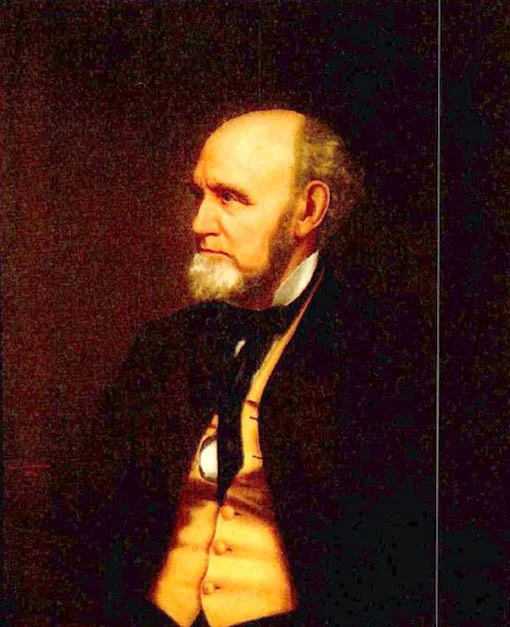Colonel Charles Whittlesey
(1808-1886)
Caroline Louise Ormes Ransom (American, 1826-1910)
Loan Courtesy of the Western Reserve Historical Society
Colonel Whittlesey was a brilliant and energetic man whose achievements as a geologist, historian, attorney, soldier and writer paint the portrait of a true Renaissance man. He authored approximately two hundred books and articles, mostly on geology and Ohio’s early history. Born in Connecticut, Whittlesey graduated from West Point with a focus on geology and served in the Army during the Black Hawk War in 1832. After the conflict he resigned his commission, studied law, and became an attorney. In Cleveland, where he served as editor of The Cleveland Herald newspaper in 1836 and 1837. In 1837 Whittlesey returned to his passion for geology, becoming assistant geologist of Ohio. In this role, he not only participated in the state’s geological survey of the period but during the process discovered numerous American Indian earthworks. The people who constructed these artworks became known as the Whittlesey Focus, in honor of the man who discovered the physical remains of their civilization. Whittlesey spent the next several decades continuing his geological work for the Federal and State governments, as well as for private business.
Whittlesey was part of the escort of President-elect Abraham Lincoln from his home in Illinois to Washington, D.C. With the outbreak of the American Civil War, he immediately enlisted in the Union Army, helped design the defenses of Cincinnati, and he became the colonel in command of the 20th Ohio Infantry. He participated in the Battles of Fort Donelson and Shiloh. Ill health caused him to resign from in military in April 1862. Upon resigning from his commission, Whittlesey returned to his geological studies. In 1867, he helped establish the Western Reserve Historical Association and served as the organizations president until his death.
ABOUT THE ARTIST: Caroline Louise Ormes Ransom (American, 1826-1910)
At a time when there were neither many professional women artists working in the Cleveland region, nor art exhibitions to attend, Caroline Ransom was able to forge a successful portrait career here. Her strategy was one of tremendous persistence in obtaining solid training, sticking to a rigorous work ethic and doggedly pursuing any spark of opportunity that would result in commissions. Born in Newark, Ohio and having come of age during a period (1850’s) when there was a paucity of academic training in the United States, especially for women, Ransom sought out independent tutoring with the best painters she could find. She worked with none other than Asher B. Durand (then President of the National Academy of Design), Thomas Hicks, and Daniel Huntington of New York. Following her move to Cleveland in 1861, the outbreak of the war provided her with the idea of painting portraits of sons, husbands, brothers and fathers who were leaving. She wrote personal letters to soldiers, offering her services as a portraitist. One of these was the future Commander in Chief, James A. Garfield. The one letter landed her very significant patronage of the entire Garfield clan, not to mention numerous other military figures.
